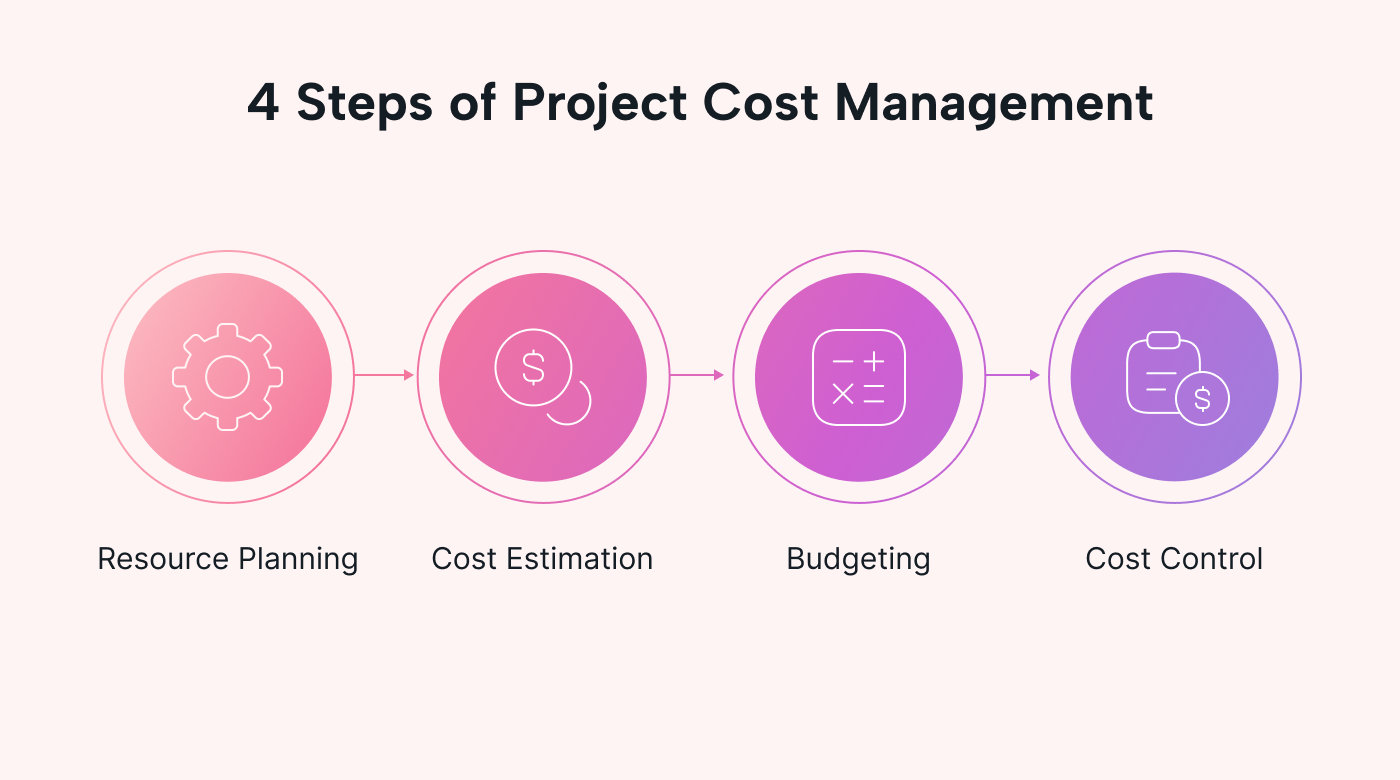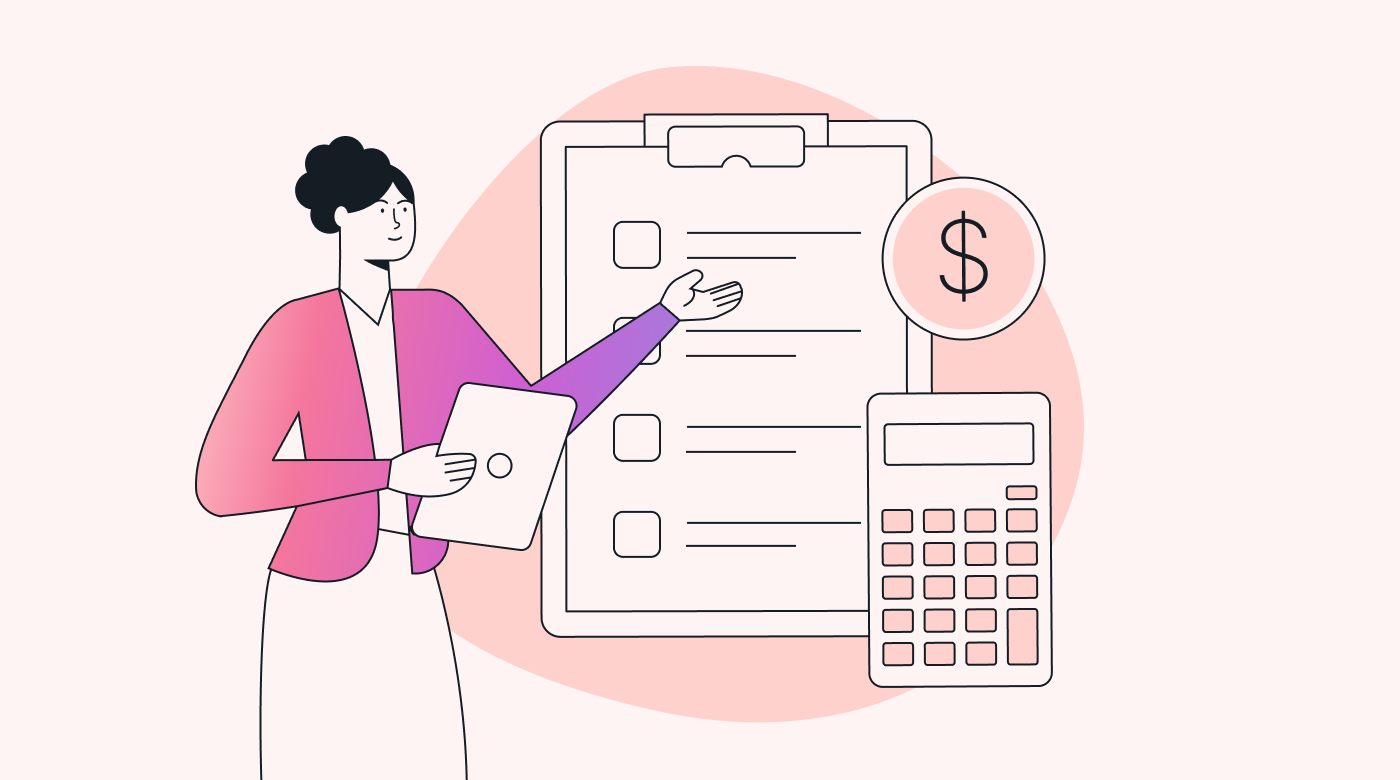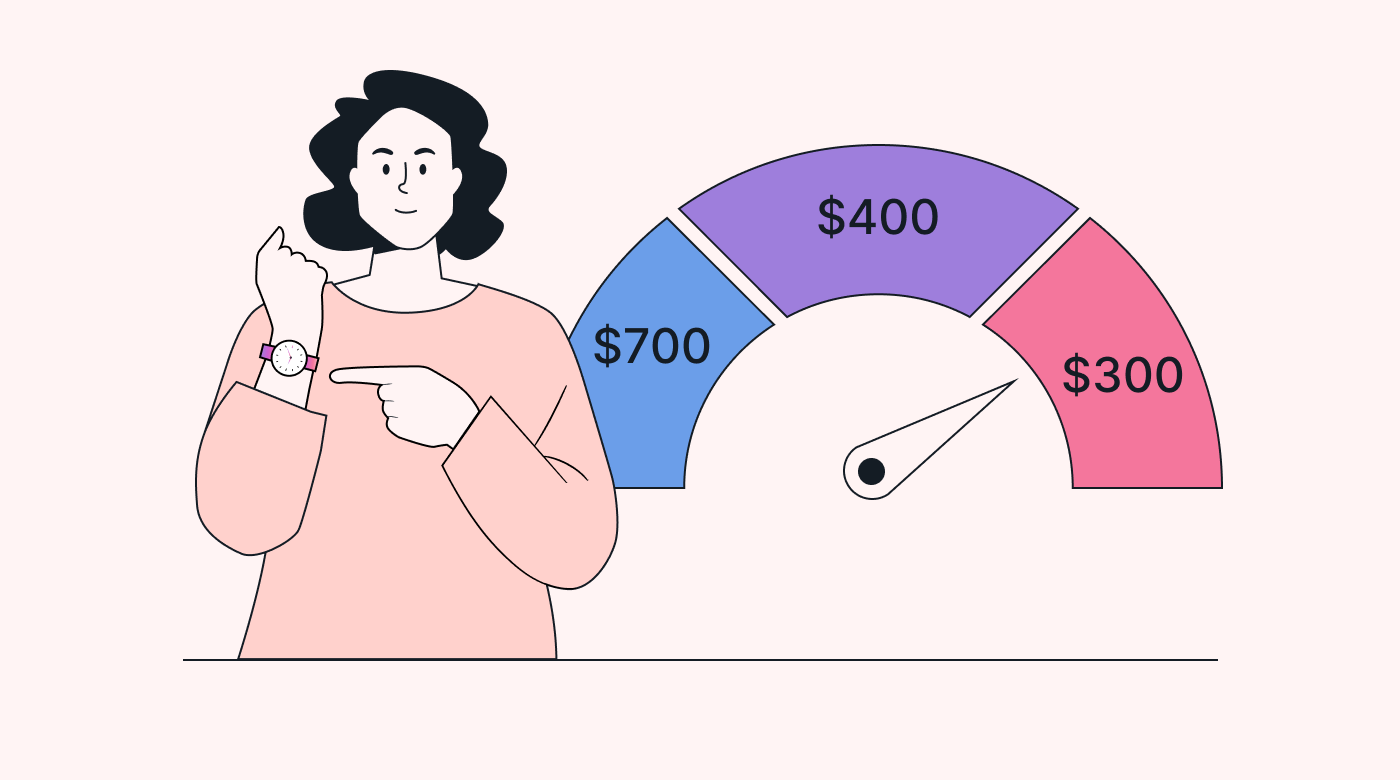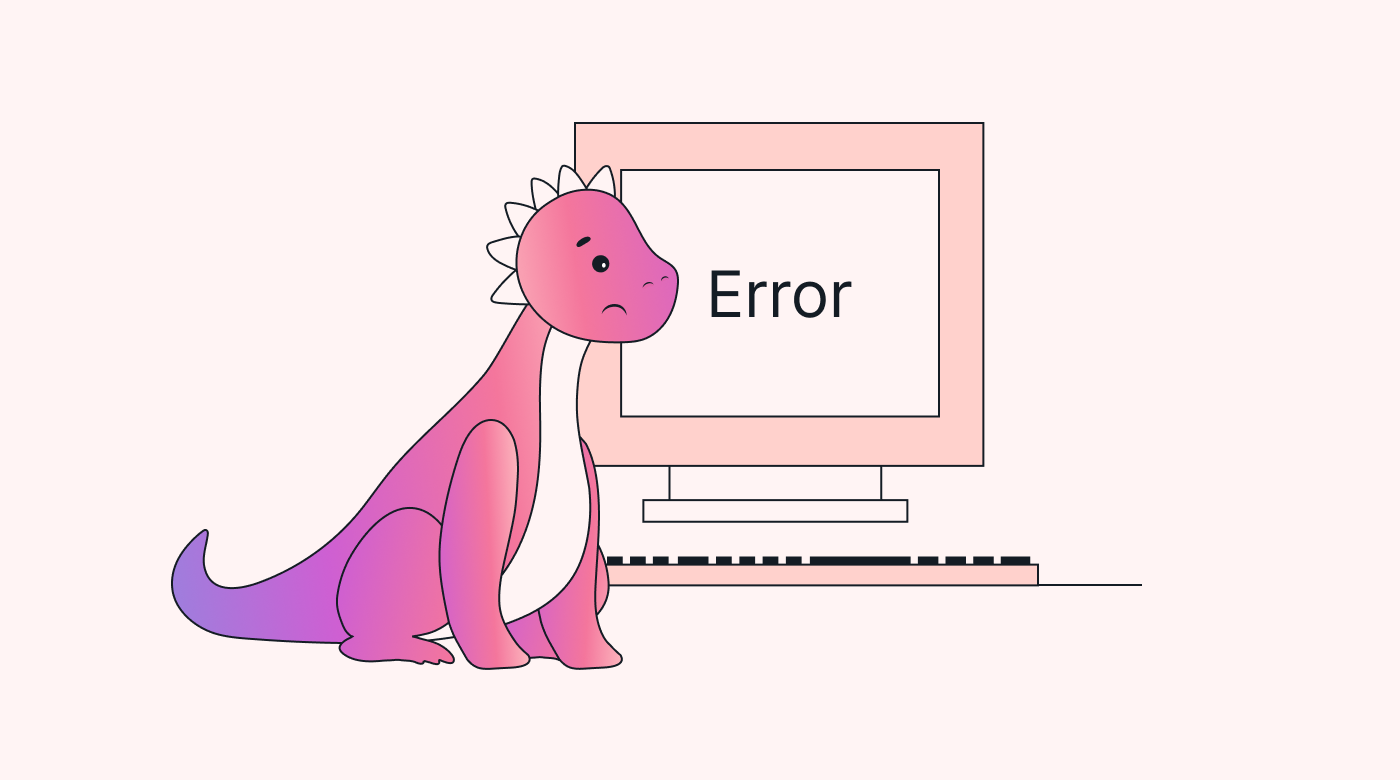Every project you take on becomes a thrilling puzzle waiting to be solved.
But let’s be honest. In this high-stakes game, it’s not just about being a puzzle-solving genius. You need to have the financial finesse of a Wall Street wizard to drive your projects to triumphant conclusions.
From meticulously budgeting every dollar to expertly tracking expenses, project cost management is the compass guiding project managers through the turbulent seas of finance.
In this article, we’ll define project cost management and discuss its importance. We’ll also cover the four steps of project cost management, the benefits of following them, and some challenges you may face.
What is the meaning of project cost management?
Project cost management is the process of planning out all the project expenses so they don’t exceed the agreed-upon budget. This includes estimating, budgeting, and controlling costs throughout the project life cycle.
Why is project cost management important?
Let’s take an example of hosting an event to understand the importance of project cost management.
Hosting an event will require a budget. With an estimate in mind, you can easily divide the high-level budget into expenses for event tasks and smaller line items. For example, site rental, equipment (chairs, tables, speakers, microphones, etc.), Invitations, catering, and more!
The budget will also determine critical decision points for your event, such as:
- Which speaker to hire
- Will the caterer be a local small business or a 4-star hotel
- What quality of decorations would you need
- Will participants be required to buy tickets or book seats for the event
Imagine making such decisions without a budget. Impossible, isn’t it?
But it’s even impossible to determine your progress without proper budgeting.
Here’s why:
With effective cost management practices, a project manager can:
- Track project progress and manage bottlenecks promptly.
- Prevent scope creep by maintaining transparency between the relevant parties.
- Set clear expectations with stakeholders.
- Steer clear of financial losses by maintaining the expected margin and delivering the anticipated ROI.
- Compile data to establish benchmarks for future projects and track cost trends.
What are the 4 steps in project cost management?
Did you know that a staggering 91.5% of large projects go over budget? That’s according to Bent Flyvbjerg, a megaproject expert and long-time Oxford professor. Another recent study shows that only 74% of respondents reported completing more than half of their projects on budget.
These are high percentages! This means that for you not to be one of them, you need to efficiently manage costs to achieve project success — without emptying your vaults.
 |
Here are the four steps to take to stay within a budget:
Step 1: Project resource planning
Project resource planning is done before any actual project work begins. In this process, you identify the resources you need to make a project work and take it to the finish line.
For example, in the case of an event, you’ll need resources like:
- People (such as employees, caterers, and technical staff)
- Equipment (such as speakers, microphones, portable stage, chairs, and other specialized equipment in limited supply)
- Time
- Money
But why do you need to plan resources?
First, it helps you spot any gap between the demand and the available workforce and other resources. This prevents a resource shortage once the project has begun.
Second, it reduces your project resource cost by offering foresight into maximizing profitable resource utilization within a project.
So, how to get started?
To create a project resource plan, start by defining the project scope. It must contain:
- A project scope statement
- Clearly defined project objectives. Go over old similar project data like schedules and tasks to get a better idea about resources.
- A high-level project roadmap or a work breakdown structure (WBS), depending on the complexity of your project
- A preliminary resource management plan to establish a framework for efficient resource utilization.
Step 2: Cost estimation
Now that you know all the resources you need, cost estimation helps you associate a cost for each. To make accurate estimations, you need to collect information.
In case of an event, you need information on:
- Resource requirements (you already have that from project resource planning)
- Resource prices (e.g., staffing cost per hour, speaker hiring fees, and food rates per person.)
- Resource requirement duration (will you rent the furniture and audio equipment? Then for how long and what will it cost?)
- Allowance for potential risks (weather hazards, security threats, food and alcohol threats like allergies and food poisoning.)
- Past project expenses and industry benchmarks (if any)
- The company’s financial health and reporting structures
- Assumptions (and buffer costs)
This data can be overwhelming, making cost estimation the most challenging task. It’s also tricky because accuracy is essential, even when dealing with variable costs and inflation.
But don’t worry. It can be made simpler by following a few steps:
- Get price quotes from sellers for tangible resources like tools, supplies, and equipment—for example, furniture, stage equipment, and audio equipment.
- It’s best to get multiple price quotes for labor costs from potential contractors. This way, you can compare and analyze the realistic cost of the work you require.
- You can also use estimation models like:
- Analogous estimating – Have access to enough historical cost data? Analogous estimating is ideal for you as it uses older, similar projects as a reference point for estimating the cost of the new project.
- Parametric modeling – A technique in which an algorithm is used to estimate future proceedings based on analysis of past events and trends.
- Bottom-up estimating – Love details? This method ensures that all details are covered to accurately estimate the cost, duration, or resources required for the project.
But why is it important to estimate project costs?
- Not all projects are the same. Some may have multiple solutions. In such a case, cost estimation can help you decide on the project solution. The advantage? It can be cost-efficient and may save you some funds.
- Assigning budgets to all your project resources and activities helps your team stick to the overall budget.
- It helps you detect areas that may cause financial wastage. You can move resources as needed to cover costs.
Step 3: Budgeting
Based on your estimates, you can begin project budgeting. It’s the process of allocating costs to a certain chunk of the project for a specific period, such as:
- individual tasks (like deciding the event programs)
- requirements (like hiring a DJ)
- days (like renting a venue)
So how does this work?
You can start budgeting by studying the work breakdown structure (WBS) and using the estimates made in step 2.
For example, you may use a portion of your funding for the event venue setup for the time being (because it happens way before the event day). And since the budget allocation is a function of time, you can use the catering funds on the day of the event, when the caterers need to be paid.
 |
Step 4: Cost control
Cost control refers to all the activities and procedures you need to minimize and track project costs, such as:
- Track expenses in real time
- Create a contingency plan
- Communicate with the team and collect data regularly
- Anticipate inflation
- Make adjustments and alert stakeholders to problems when they occur
Cost-controlling aims to compare actual project costs with initially planned budgets and take steps to ensure the project sticks to the original plan. Or correct that gap by increasing the budget or reducing the scope of work.
This brings us to the question: How to control cost?
First, you can start by reviewing your expenses. How often you review will depend on your project. That means sometimes you’ll want to review costs in real-time and other times, you may check in monthly or even quarterly.
For example, in the case of event management, you may want to do daily checks to track order expenses like chairs, stage equipment, and decor.
Second, track earned value. This project cost control method helps you measure the level of work completed on a project against the original plan. Helps you see if you’re over your budget or behind in your project schedule.
Pro tip: If your project cost deviates from your original budget, devise and execute an action plan and communicate it to the relevant stakeholders. They will depend on you to decide on or at least suggest a solution.
Post-project cost review
We might as well call this “Step 5” of project cost management, which happens after the project is done.
Once the project is over, for one last time, you need to calculate cost variance and evaluate how far your project deviated from your planned budget.
To do so, answer questions like:
- What were the project’s total costs?
- How did your final costs compare to your estimated costs?
If your final spending is close to what you expected, congratulations! You have yourself a successful project (at least financially).
If your spending is far from the original budget, you may have:
- Spent too much money - It shows you underestimated your project budget or didn’t predict the risk expenses. Evaluate why.
- Spent too little money - It indicates inaccuracies in your cost budgeting process. Make a note of it for future projects to increase cost estimation accuracy.
What are the benefits of project cost management?
Here’s a quick list of key benefits of project cost management:
- Prevents budget overruns: Allotting costs in the early planning stages can help you or your project manager avoid overspending on specific areas.

- Protects you from risks: With a buffer allowance, you can tackle unexpected expenses like a pro.
- Aids future planning: Your cost reports can help you create more accurate future budgets.
- Savings: A dollar saved is a dollar earned. By saving funds that might sometimes be spent on unnecessary tasks, the funds can be redirected to other, more purposeful activities.
- Prioritization: Do you deal with multiple ongoing projects that demand shared resources? You’ll need to prioritize and schedule your tasks so your resources aren’t overloaded and your costs don’t soar out of control. Cost management helps prioritize the projects that require the most resources and funds.
- Reduced stress: Effective cost control keeps everything within the budget, reducing stress related to expenses.
- Procurement value: Using cost management, you can review the prices of different vendors' goods and services. This way, you can negotiate and decide on a price advantageous to your company. It’s about getting the value for the money invested.
- Accountability: Individuals or groups receive specific tasks to finish by a deadline. If they don’t finish on time, it adds extra expenses. The hours billed align with the budget for personnel. Finishing within the given time keeps the project on budget.
What are the challenges of project cost management?
Cost management can be tricky. Here are some challenges you may face:
- Resources drought: You may have a small project budget sometimes. This can mean difficulty acquiring the needed resources, such as labor and materials, to complete the project successfully.
- Estimation error: Poor forecasting can occur if you or your project manager don’t understand the project’s scope entirely. This can lead to financial wastage.
- Outdated technology: Project managers need advanced, up-to-date technology to manage project expenses accurately.
 |
Ready to make your project performance skyrocket with effective cost management?
Effective project cost management isn’t merely an administrative task but one of the pillars of your project’s success.
It ensures you make informed financial decisions, optimize resources, adapt to unforeseen challenges, and ultimately achieve your goals on time and within budget. From the initial estimation and budgeting phases to ongoing monitoring and control, every step is critical!
But here’s the kicker: You don’t have to navigate this complex terrain alone. With Motion’s AI on your side, you have a tireless assistant who crafts your team’s schedules tailored to your priorities and keeps a watchful eye on your tasks and their progress. This lets you view where and how all your resources (and funds) are used.
Try Motion for free and get tasks done on time.





